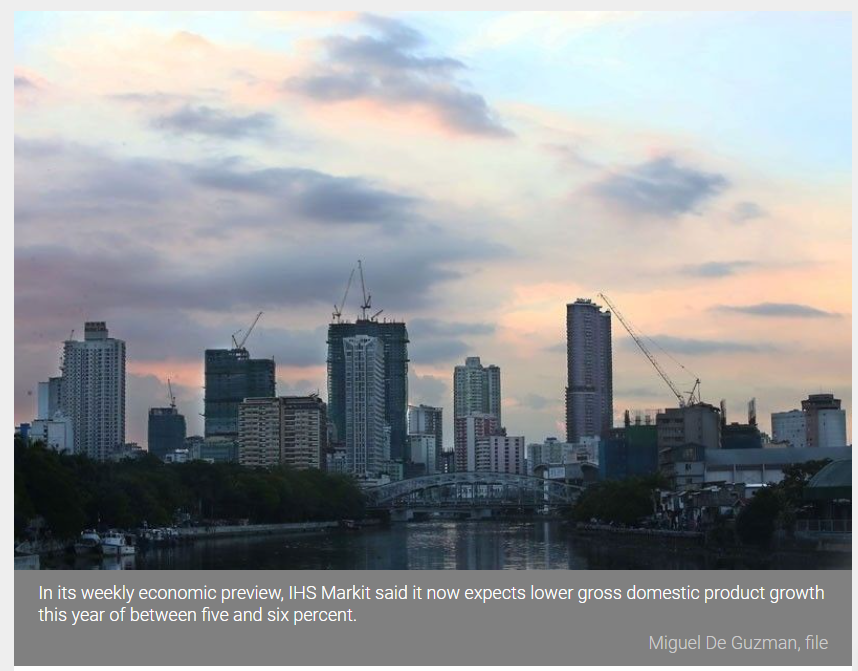Optimism wanes on Philippine recovery
MANILA, Philippines — The country’s road to economic recovery is now getting less and less bright amid the sustained surge in COVID-19 cases, even as the government has reimposed strict lockdown measures, a global data analytics firm said.
In its weekly economic preview, IHS Markit said it now expects lower gross domestic product (GDP) growth this year of between five and six percent.
Last month, it had forecast the Philippine economy to expand by 7.4 percent. This was before the government placed Metro Manila and nearby provinces under the strictest quarantine measure for two weeks.
IHS Markit’s latest forecast now falls below the government’s target of 6.5 to 7.5 percent for the year.
“While the Philippine economy is still expected to show a positive growth rebound in 2021, the near-term outlook has been dampened by the sharply rising wave of new COVID-19 cases since mid-March 2021,” IHS Markit Asia-Pacific chief economist Rajiv Biswas said.
He said such a move is expected to constrain the pace of economic recovery in the near-term as strict pandemic control measures have been imposed in Metro Manila and other surrounding areas badly impacted by the latest surge in cases.
Biswas added that vaccine rollout in the country has also been hampered by the lack of sufficient supplies.
“Consequently, the pace of economic recovery in 2021 is likely to be less buoyant than previously expected, with renewed pandemic control measures constraining the momentum of growth recovery in the near-term,” Biswas said.
“GDP growth in 2021 is expected to be in the five to six percent range, with stronger growth in 2022 as the pandemic is gradually constrained by widening vaccine rollout in the Philippines, resulting in more normal economic conditions,” he said.
The Philippine economy contracted by a record 9.6 percent in 2020 as it buckled under the weight of a prolonged lockdown, the world’s longest, and consecutive disasters that hit the country.
IHS Markit emphasized that an important stabilizing factor for the economy has been remittances sent by overseas Filipino workers (OFWs). It only declined by less than one percent last year, equivalent to around 10 percent of GDP.
However, an estimated 400,000 OFWs were repatriated amid job losses globally and this has raised concerns on the impact on remittance flows for 2021. Remittances support domestic consumer spending in the country.
Further, the research firm said the Philippines continues to confront challenges in vaccinating its population due to difficulties in obtaining sufficient vaccine supplies and logistics.
Data from the Department of Health showed that more than 920,000 doses have been administered, but this still represents less than one percent of the population.
“A key problem confronting the Philippines, like many other developing countries, is that it is relying on imported vaccine supplies and is therefore vulnerable to supply disruptions due to vaccine nationalism,” Biswas said.
This means that countries with vaccine production facilities prioritize supplies to their own domestic populations due to the mounting human toll of the pandemic.
The Philippines is still awaiting some 25 million doses from China’s Sinovac and nine million doses of AstraZeneca.
The COVAX facility, a global vaccine sharing initiative, has faced delays in receiving AstraZeneca vaccine supplies from the Serum Institute of India, a key manufacturer of the vaccine.
This as India is also facing rising COVID-19 cases, prompting its government to impose temporary restrictions on the export of COVID-19 vaccines in order to accelerate inoculation of its own people.
The government is targeting to inoculate 70 million Filipinos by the end of the year.
Source: https://www.philstar.com/business/2021/04/12/2090424/optimism-wanes-philippine-recovery


 English
English




